R.J. Stowell's Blog: rjsomeone, page 62
July 29, 2018
Free Hand and Interview
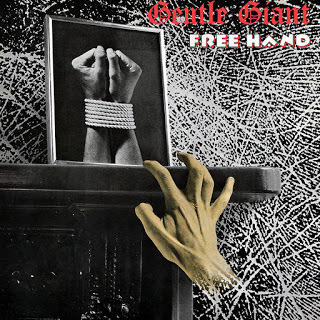 Free Hand
Free HandListen to "On Reflection" - you'd swear it's a chorale. The song's contrapuntal a capella, like a Bach choral anthem, only this is 5 guys! It takes a pretty tight vocal ensemble to go more than halfway through a song without touching an instrument. "Last Voyage" has a piano break section that proves somebody was listening to Brubeck. "Talybont" conjures up knights and damsels with its woodwinds and harpsichord. Within the first few seconds of "Time To Kill," you'll hear a 70s-era electronic hockey game, like pre-Atari, and half the fun of the opener, "Just the Same," is figuring out the oddly syncopated rhythm. The track raises a number of questions, beginning with, why the hell wasn't this lot megasuccessful? We have complex time signatures to keep the prog fans happy and trippy, discordant instrumentation, while Kerry Minnear's delightful keyboard wouldn't be out of place at the Winter Gardens in Blackpool. Gary Green's guitar has the sort of restrained intensity that you only find in early Steely Dan. Indeed, jazz influences surface just enough to be interesting without being distracting; this was 1975, and generally horns were anathema.

The next two songs raise for me an interesting thought about another band of the era that had rather more success, viz. Queen, whose A Night at the Opera topped the album chart for Xmas while "Bohemian Rhapsody" did the same in the singles charts. The LP features "Death on Two Legs." a vitriolic condemnation of former management, and both "Bo Rap" and "The Prophets' Song" feature four part canons/fugues/madrigals. "Free Hand" has a celebration of release from previous management as its title track, and in "On Reflection," the most spectacular (the only proper?) fugue ever recorded by a rock band. Free Hand was A Night at the Opera's more sophisticated older sibling.
"Time to Kill" is a jazz/funk workout that shows Kerry and the band really could turn their hands to anything, and well. "His Last Voyage" is the second track on which Kerry gives full vent to his classical influences (the other being his solo bit from "On Reflection," dropped from later live gigs). "Talybont": Ireland, or the 15th century? While Queen gave us a dash of opera and vaudeville, the Giant really understood these genres and gave us the real thing, which turned out to be more than most regular folks could chew. We finish off with "Mobile," still with Irish/medieval influences to the fore, a worthy finisher.
What Free Hand lacks is production polish – Hey, Steven Wilson, doing anything exciting right now?
In'terview
In'terview is an LP either admonished for being the last great Gentle Giant LP or the first horrible one (keep in mind that compared to Giant for a Day, this is a masterpiece. Even In'terview's horrible cover is better than Giant for a Day). For 40 years I have been of the latter set, never really giving the LP a chance. As mentioned in the last review of Going for the One, 1976 was a struggle for me musically and I only gave In'terview a cursory listen. Happenstance has changed my mind. As a record collector who has but the skeleton of a once grand collection, I, for some reason, kept In'terview, I think because I couldn't get $3 for it at the record shop. But the sound quality of the LP is appalling and herein may lie my initial distaste. As fate would have it (if fate indeed devotes its time to trivialities), I came across a 2012 re-release on British vinyl, and the difference is astounding; it is as if I'd never heard these tracks before. I've had it glued to the turntable now for a week finding myself newly frustrated. Not because the music was disappointing or horrid (i.e. Giant for a Day), but because this is the inaccessible and difficult Giant found on The Power and the Glory. I'm thrilled. It's like hearing something brand new from '76, like Peabody took my back in the Way Back machine (WABAC). And now I've got to work for it.
[image error]
The seven tracks on the album are characteristic of Gentle Giant's complex and unique blend of rock, European classical, medieval English music, and folk. There are, however, other surprising influences as well: "Give it Back" has a reggae feel to it and Ray does a great job with the off-beats on the bass that give reggae its distinct sound. Then again, this is Gentle Giant, so it really doesn't sound much like reggae - more a subtle reggae flavoring. "Design" opens with the excellent vocal harmonies and then segues into an interesting percussion section that co-mingles with the vocals parts. The soft-spoken acoustic textures and string synth on "Empty City" are wonderful; this is easily my favorite track on the album. I have to hear it again and rather than go into the drivel of my newly enamored affair, I encourage a listen by even the staunchest detractor of the LP by stating:
There is a moment on In'terview that, whether on purpose or accidentally, perfectly describes the Giant's joint. A sampled faux-interviewer opens "Design" by asking Gentle Giant to describe their music. A flurry of answers erupt simultaneously; the result an indistinct haze of voices that would take a particularly attentive ear to garner a grain of sense. No matter how eloquent each member might have been answering on their own, the counterpoint of voices is like five poets espousing their verses simultaneously. Listen now. It's short, it's succinct, it's Gentle Giant like new again.
Published on July 29, 2018 04:55
July 28, 2018
Going for the One - Yes
Understand that in 1977, I was at a loss. In high school, my heart and soul were devotees of Yes, of prog in general, following the band from one stadium show to another. Then, ho-hum, came the time when we friends found our own paths and parted ways. Certainly, there was Queen and the new realm of art rock, from Roxy to Bowie, but the lush, ethereal music on which I'd spent my formative years was suddenly de rigueur at best. With Wakeman finding his way back to Yes there was hope for the hopeful, but the result, Going for the One, wasn't what we'd wanted, and although I joyfully exulted in the title track, insistent that Yes had evolved, my enthusiasm was false at best; I'm not sure in retrospect that I even listened to Going for the One all the way through.
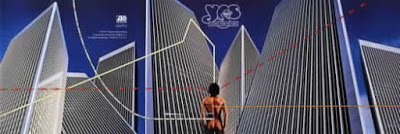 At the dawn of the 70s, Yes combined the 60s pop-rock sensibilities of the Beatles and the Zombies with a strong experimental jazzy prog rock influence and became one of the finest and most innovative prog rock bands of the era. Other competitors like Pink Floyd, Genesis, and Emerson Lake & Palmer were still toying around for a proper sound, but Yes and King Crimson were already well underway to jumpstarting the prog-rock movement. The band continued to impress new fans and critics alike with Fragile (1972) and Close To The Edge (1973), with follow-up releases Tales From Topographic Oceans (1974) and Relayer (1974) praised by die-hard fans though lamented by the critics.
At the dawn of the 70s, Yes combined the 60s pop-rock sensibilities of the Beatles and the Zombies with a strong experimental jazzy prog rock influence and became one of the finest and most innovative prog rock bands of the era. Other competitors like Pink Floyd, Genesis, and Emerson Lake & Palmer were still toying around for a proper sound, but Yes and King Crimson were already well underway to jumpstarting the prog-rock movement. The band continued to impress new fans and critics alike with Fragile (1972) and Close To The Edge (1973), with follow-up releases Tales From Topographic Oceans (1974) and Relayer (1974) praised by die-hard fans though lamented by the critics.
 Nearly two and a half years after Relayer, Yes finally unleashed Going For The One, but it's taken 40 years for this writer to acknowledge the LP as a part of the canon. It was a time when punk had surged forth, and Johnny Rotten & Co. had a field day ripping up Yes, Pink Floyd, Queen and prog pretentiousness in general. Yet it seemed the members of Yes didn't give a damn about the trends of the day, as their usual cosmic, soaring, mystical aesthetic pervades the album in a big way that I hadn’t realized in 1976.
Nearly two and a half years after Relayer, Yes finally unleashed Going For The One, but it's taken 40 years for this writer to acknowledge the LP as a part of the canon. It was a time when punk had surged forth, and Johnny Rotten & Co. had a field day ripping up Yes, Pink Floyd, Queen and prog pretentiousness in general. Yet it seemed the members of Yes didn't give a damn about the trends of the day, as their usual cosmic, soaring, mystical aesthetic pervades the album in a big way that I hadn’t realized in 1976.
After 40 years, giving Going for the One a truly positive review (and understand that makes the LP an AM6, or so) is particularly satisfying. I would never be a punk, but I understood the punk sensibility and the critique of prog in a world that would soon embrace the Reagan/Thatcher era. There were no "Wondrous Stories" there. I'd find my post-punk sensibilities in the 80s, but, like my peers, I was having trouble processing the end of the prog era. The British were so angry, and understandably so, but we lived in the sub-suburbia of Ventura County, California with the beach just down the road and our own cars and girls, and anger just didn't play into it. And yet, our music was chastised and worse, our bands had failed us. Gentle Giant would give us Free Hand, then lose it on Interview (and worse on Giant for a Day), ELP gave us what may be the worst record by an iconic band ever released, Love Beach, and the rest would hobble along. It was mind-numbing. Luckily I found my jazz jawn through Joni Mitchell, Steely Dan and Weather Report, but this wasn't the music of High School boys – I was forced unwillingly to grow up.
40 years on, prog has found its legs with bands like Dream Academy and Porcupine Tree; Steven Wilson is as important to me now as Eddie Offord was in 1974, and a new generation has selectively found its prog roots. Those with that kind of foresight are lucky to pick and choose. They're not burdened by The Final Cut or Tormato, they get to discover Supertramp and 10cc and Camel, in all its freshness and leave the rotting tormatoes on the vine.
 At the dawn of the 70s, Yes combined the 60s pop-rock sensibilities of the Beatles and the Zombies with a strong experimental jazzy prog rock influence and became one of the finest and most innovative prog rock bands of the era. Other competitors like Pink Floyd, Genesis, and Emerson Lake & Palmer were still toying around for a proper sound, but Yes and King Crimson were already well underway to jumpstarting the prog-rock movement. The band continued to impress new fans and critics alike with Fragile (1972) and Close To The Edge (1973), with follow-up releases Tales From Topographic Oceans (1974) and Relayer (1974) praised by die-hard fans though lamented by the critics.
At the dawn of the 70s, Yes combined the 60s pop-rock sensibilities of the Beatles and the Zombies with a strong experimental jazzy prog rock influence and became one of the finest and most innovative prog rock bands of the era. Other competitors like Pink Floyd, Genesis, and Emerson Lake & Palmer were still toying around for a proper sound, but Yes and King Crimson were already well underway to jumpstarting the prog-rock movement. The band continued to impress new fans and critics alike with Fragile (1972) and Close To The Edge (1973), with follow-up releases Tales From Topographic Oceans (1974) and Relayer (1974) praised by die-hard fans though lamented by the critics. Nearly two and a half years after Relayer, Yes finally unleashed Going For The One, but it's taken 40 years for this writer to acknowledge the LP as a part of the canon. It was a time when punk had surged forth, and Johnny Rotten & Co. had a field day ripping up Yes, Pink Floyd, Queen and prog pretentiousness in general. Yet it seemed the members of Yes didn't give a damn about the trends of the day, as their usual cosmic, soaring, mystical aesthetic pervades the album in a big way that I hadn’t realized in 1976.
Nearly two and a half years after Relayer, Yes finally unleashed Going For The One, but it's taken 40 years for this writer to acknowledge the LP as a part of the canon. It was a time when punk had surged forth, and Johnny Rotten & Co. had a field day ripping up Yes, Pink Floyd, Queen and prog pretentiousness in general. Yet it seemed the members of Yes didn't give a damn about the trends of the day, as their usual cosmic, soaring, mystical aesthetic pervades the album in a big way that I hadn’t realized in 1976.After 40 years, giving Going for the One a truly positive review (and understand that makes the LP an AM6, or so) is particularly satisfying. I would never be a punk, but I understood the punk sensibility and the critique of prog in a world that would soon embrace the Reagan/Thatcher era. There were no "Wondrous Stories" there. I'd find my post-punk sensibilities in the 80s, but, like my peers, I was having trouble processing the end of the prog era. The British were so angry, and understandably so, but we lived in the sub-suburbia of Ventura County, California with the beach just down the road and our own cars and girls, and anger just didn't play into it. And yet, our music was chastised and worse, our bands had failed us. Gentle Giant would give us Free Hand, then lose it on Interview (and worse on Giant for a Day), ELP gave us what may be the worst record by an iconic band ever released, Love Beach, and the rest would hobble along. It was mind-numbing. Luckily I found my jazz jawn through Joni Mitchell, Steely Dan and Weather Report, but this wasn't the music of High School boys – I was forced unwillingly to grow up.
40 years on, prog has found its legs with bands like Dream Academy and Porcupine Tree; Steven Wilson is as important to me now as Eddie Offord was in 1974, and a new generation has selectively found its prog roots. Those with that kind of foresight are lucky to pick and choose. They're not burdened by The Final Cut or Tormato, they get to discover Supertramp and 10cc and Camel, in all its freshness and leave the rotting tormatoes on the vine.
Published on July 28, 2018 05:17
July 27, 2018
Storytelling and Ideas - Progressive Rock and Poetry
 "I bought eggs," is not a story.
"I bought eggs," is not a story.Even if a few characters are tossed into the mix and the reader learns that you and James went to a farm stand to get fresh eggs on the way to Chloe's house and you bought them from the millennial chick with purple hair and a sleeve tattoo who left her job at a nonprofit in DC to come back home and restart the family farm — it still isn’t a story, it's a report. You bought eggs. James went with you. The millennial chick sold them to you at the stand on her family farm. So far, it isn't a story because there is nothing at stake for either the teller or the listener, the buyer or the seller.
Such is not the case with poetry. From ee cummings to Childish Gambino, poetry, while it often indeed tells a story, is about ideas. Thick as a Brick, the anti-concept LP, when all is considered – theme, poetry, ideas, Gerald Bostock, the ruse, the newspaper – is complex storytelling along the lines of a mystery novel in which all the pieces must be put together. But separate the poetry from its incidental parts and the poem itself, despite its epic length (long enough to be in italics rather than quotes), is more a collection of ideas.
 Really don’t mind if you sit this one out.
Really don’t mind if you sit this one out.My word’s but a whisper — your deafness a SHOUT.
The poem opens with a slight aimed at the concert audience who can't sit through a performance of quiet songs, at least according to Ian Anderson, but more, the insult is meant for a wider audience – for society's leaders and elders, who won't listen anyway.
I may make you feel but I can't make you think.
Your sperm’s in the gutter — your love’s in the sink.
Society is driven by lust. The only way "I" can make an impression is to appeal to base senses. Morals are in the gutter and common sense has gone down the drain. (My how this feel's like Trump's America).
So you ride yourselves over the fields
and you make all your animal deals
Society moves through life without stopping to think, like animals.
And your wise men don't know how it feels
to be thick as a brick.
The "wise men" know nothing, consider the source; the implication that we should all think for ourselves.
And the sand-castle virtues are all swept away
in the tidal destruction
the moral melee.
The elastic retreat rings the close of the play
as the last wave uncovers
the newfangled way.
Beautiful metaphor. Anderson describes society's fickle virtues and morals by likening them to sand-castles that crumble with a new set of waves.
But your new shoes are worn at the heels
and your suntan does rapidly peel
Whatever is shiny and new (i.e. a new moral/religious fad) quickly becomes dull and worn, just like a suntan which looks good on you, but only for a while.
And your wise men don’t know how it feels
to be thick as a brick.
 The idea: think for yourself. The poem on its own is clever but not genius. The genius is realized when the parts are assembled and brought to life through the musicianship. That's what music is all about.
The idea: think for yourself. The poem on its own is clever but not genius. The genius is realized when the parts are assembled and brought to life through the musicianship. That's what music is all about.Often, though, ideas are more random. When Cummings writes "Nobody, not even the rain, has such small hands," ideas are reduced to images. And that's what we find in progressive rock more often than not. From "Close to the Edge" to Gentle Giant's take on R.D. Laing's "Knots," progressive rock lyrics are all about imagery. Indeed, so is progressive rock's symphonic tone. Like Beethoven's 6th invokes a sense of the pastoral, Camel's The Snow Goose tells a story that, while know to Scandinavians, is left to an American audience to decipher. Any sophisticated listener (and if you read about music, that's who you are) will find the story in this lengthy instrumental piece.
Seriously, "Sharp. Distance./ How can the wind with its arms all around me?" means nothing (how can the wind what?), but one is a buffoon if the imagery coupled with the music doesn't conjure up Roger Dean-like imagery.
Published on July 27, 2018 06:42
July 26, 2018
Brain Salad Surgery - ELP - AM10
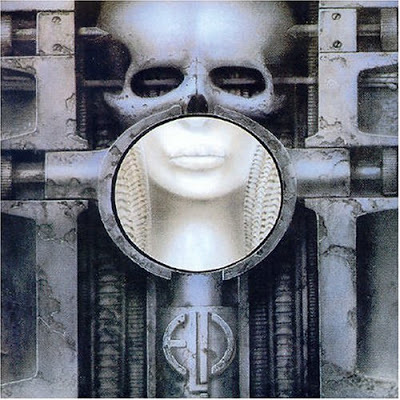 Brain Salad Surgery
(AM10)
Brain Salad Surgery
(AM10)Producer: Greg Lake
Length: 45:04
Released: November 19, 1973
Tracks: 1) Jerusalem (2:44) 2) Toccata (7:20) 3) Still You Turn Me On (2:52); 4) Bennie the Bouncer (2:15) 5) Karn Evil 9, 1st Impression (8:39) 6) Karn Evil 9, 1st Impression, Part II (4:43) 7) Karn Evil 9, 2nd Impre4ssion (7:07); 8) Karn Evil 9, 3rd Impression (9:07)Personnel: Keyboards (Hammond Organ C3, Steinway Piano, Moog IIIC, Mini Moog, Poly Moog, Moog Taurus) –Keith Emerson; Vocals, Bass, Acoustic, Electric and 12 String Guitars –Greg Lake; Drums, Percussion, Tympani, Tubular Bells – Carl Palmer
Brain Salad Surgery is ELP's over the top masterpiece. While the first two LPs were like three mega-talented, off the cuff musicians finding a niche through their venture into art rock, and Pictures was a grand experiment if reasonably straightforward, Trilogy veered into territory that the band was hard-pressed to take on the road. Carl Palmer stated that "For the first few albums, we were just a really good three-piece band, and our sound was on the record. From Trilogy and into Brain Salad Surgery was that big overdubbing period. That's why you've never heard the whole of Trilogy or Brain Salad Surgery [live] in their entirety. We were never really able to take those records to the stage." That complexity, even more pronounced on Trilogy, was nonetheless a reason that, despite its un-swaggering success, Brain Salad Surgery was the LP that put ELP behind the 8-ball. Palmer again said, "Our timing in how we projected ourselves within the industry was rubbish. We took too long before putting out Works, and then we went out with the orchestra—it was wrong. At a point in time in the '70s, we were in that top echelon of groups like the Rolling Stones, Led Zeppelin and Pink Floyd. We were there for three or four years. After that, we moved down to the second echelon. We had brilliant music, but our timing was off and the way we were directed hurt us." In essence, the lengthy production times and the snail's pace required for ELP to manage the complexities of the music thrust them into a musical ghetto, one that was otherwise populated by bands as diverse as the Ramones, Talking Heads and the disco-era Bee Gees. ELP's bombast made them seem like dinosaurs. None of that discounts the music.
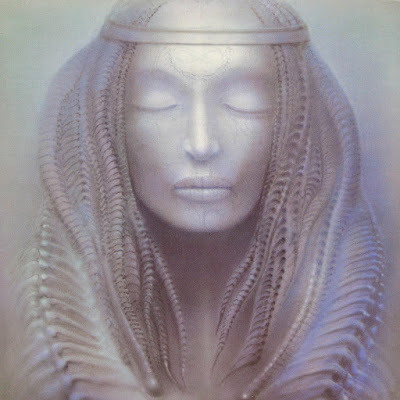 The LP was ELP's crowning achievement, from its brilliant cover, by artist, Hans Giger to the immensity of "Karn Evil 9." "We were still ascending when we made Brain Salad Surgery," Keith Emerson said. "We were enjoying a sensational amount of success, and I suppose we felt as if we could do anything – and we certainly tried. Musically, lyrically and visually, we really went for it." The album would be the inaugural release by the band's newly formed Manticore label and would differ from the extensively overdubbed Trilogy in that the group plotted out the music as a largely live creation. At the start of 1973, Emerson, Greg Lake and Carl Palmer purchased an abandoned cinema in Fulham, London, and converted it into a rehearsal and production facility, using an upstairs foyer to assemble and run through new compositions. "That was the general idea, to play the album live," Emerson recalled. "I pretty much had the whole concept in mind. We had taken a bit of a break to be with our families, so that gave me a fair enough time to put down enough hand-written ideas for the "Karn Evil 9." I then approached Greg and Carl with a sheaf of manuscript papers, and we set about rehearsing, going over the material and being sort of repetitive about it."
The LP was ELP's crowning achievement, from its brilliant cover, by artist, Hans Giger to the immensity of "Karn Evil 9." "We were still ascending when we made Brain Salad Surgery," Keith Emerson said. "We were enjoying a sensational amount of success, and I suppose we felt as if we could do anything – and we certainly tried. Musically, lyrically and visually, we really went for it." The album would be the inaugural release by the band's newly formed Manticore label and would differ from the extensively overdubbed Trilogy in that the group plotted out the music as a largely live creation. At the start of 1973, Emerson, Greg Lake and Carl Palmer purchased an abandoned cinema in Fulham, London, and converted it into a rehearsal and production facility, using an upstairs foyer to assemble and run through new compositions. "That was the general idea, to play the album live," Emerson recalled. "I pretty much had the whole concept in mind. We had taken a bit of a break to be with our families, so that gave me a fair enough time to put down enough hand-written ideas for the "Karn Evil 9." I then approached Greg and Carl with a sheaf of manuscript papers, and we set about rehearsing, going over the material and being sort of repetitive about it." It begins with a track that every British School Boy and School Girl would know, the E of C hymnal standard "Jerusalem," with its lyrics by William Blake. The track features the debut of the prototype Moog Apollo, the first-ever polyphonic synthesizer (meaning that more than one sound could emanate from the source at the same time); the famous poem based in parts on the once widely believed English legend of Jesus Christ's visit to Glastonbury, escorted by Joseph Of Arimathea, after his ministry in ancient Palestine. The subject matter of this song indicates a nod to ELP's unabashed Englishness and simultaneously lends an air of timeless tradition and ceremony to the music. But "Jerusalem" was banned on the radio in England when issued as a single and therefore failed to chart. The track is followed by another stellar ELP jaunt into classical, an adaptation of Alberto Ginastera's 1st Piano Concerto, 4th Movement: Toccata Concertata. An incredible arrangement whittling the orchestration down to the trio without the use of overdubbing.
 The LP's lyrical ballad, "Still, You Turn Me On" is Brain Salad Surgery's "From the Beginning" or "Lucky Man," Lake’s continued venture into the madrigal love song; the love song of the troubadour. And somewhat formulaically, the track is followed by the bit of fun, "Benny the Bouncer," which of course is the album's take on "The Sheriff" and "Jeremy Bender." Formulaic, sure, but fun and each a welcome respite from the grand scheme of things.
The LP's lyrical ballad, "Still, You Turn Me On" is Brain Salad Surgery's "From the Beginning" or "Lucky Man," Lake’s continued venture into the madrigal love song; the love song of the troubadour. And somewhat formulaically, the track is followed by the bit of fun, "Benny the Bouncer," which of course is the album's take on "The Sheriff" and "Jeremy Bender." Formulaic, sure, but fun and each a welcome respite from the grand scheme of things.The LP’s oeuvre is, of course, the nearly 30 minute "Karn Evil 9," which concludes side one and takes up the entirety of side two. The original idea for the song was a planet (called "Ganton 9") on which evil flourished. Peter Sinfield (of King Crimson) listened to the music and he and Emerson developed the name from their original idea, and from Pete's comment that the music sounded like a carnival. The 1st and 2nd Impressions generally follow this idea, dealing with inhumanities and exploitation. The 3rd Impression addresses the concept of computers taking over civilization. This dark prediction was made at a time when computer technology was just beginning to develop.
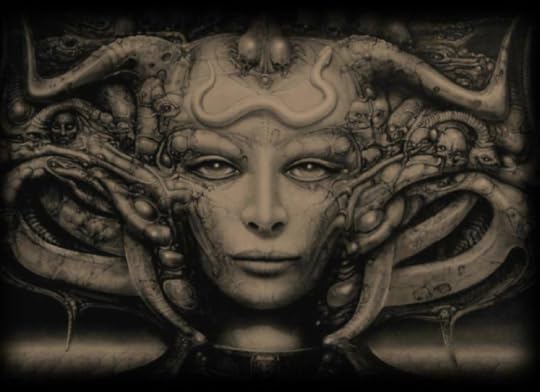
The 1st Impression was further broken down into two parts due to the time limitations of the LP format. 1st Impression-Part 2 is probably the most well-known track on the album. It has even been used as the theme for a British prime time TV show and the six o’clock news in Los Angeles. This impression, of course, includes those famous words, 'Welcome back, my friends, to the show that never ends...' Initially, Lake felt the lyrical portions were pitched too high for his vocal range, and Emerson had to transpose everything down a step. It was Keith who provided the "vocal attribution" of the computer, which says, 'negative', 'primitive', 'limited', 'I let You live', 'what else could I do?' and 'I'm perfect. are You?' as counterpoint to Lake's human repartee, produced by running his voice through the Moog's ring modulator. Said Emerson of the epic, "It's basically a warning. Karn Evil is a place. Everything is heading for that place unless something is done about it. The first lines tell you that: 'I heard a warning...about an age of power when no one had an hour to spare.' But the rest of the song is more like a satirical sideshow, a joke. There's so much violence it becomes funny, a sick thing, rather like what happens in Clockwork Orange. It's about something gone out of control, which, in Karn Evil, happens to be a computer. It's something that affects everybody. "Karn Evil 9," indeed all of Brain Salad Surgery is either prog bombast or rock brilliance; maybe, somehow both, but nonetheless an AM10.
Published on July 26, 2018 04:31
July 25, 2018
Repost from 2014 - I must be getting sentimental
Trilogy
(AM8)
Artist: Emerson, Lake and Palmer
Producer: Greg Lake
Length: 42:23
Released: July 6, 1972
Tracks: 1) The Endless Enigma I (6:41) 2) Fugue (1:56) 3) The Endless Enigma II (2:03); 4) From the Beginning (4:16) 5) The Sheriff (3:22) 6) Hoedown (3:47) 7) Trilogy (8:54); 8) Living Sin (3:13); 9) Abaddon's Bolero (8:08)
Personnel: Keyboards (Hammond Organ C3, Steinway Piano, Moog Synthesizer IIIC, Mini Moog) – Keith Emerson; Vocals, Bass – Greg Lake; Drums, Percussion – Carl Palmer
 Trilogy is the ELP studio album that exemplifies the myriad styles dabbled in during their peak creative phase (1970-1973), and thus a great starting point for any novice prog fan, or anyone for that matter. There's the symphonic suite ("Endless Enigma"), featuring a wonderful piano "Fugue" at its core), the catchy yet melancholy acoustic ballad from Lake (the FM hit "From The Beginning"), a Wild-West comedy number that echoes The Beatles' "Rocky Raccoon" ("The Sheriff"), the classical salvo ("Hoedown", one of the great classical covers in their repertoire and another FM staple), hard rock ("Living Sin"), and synth exploration ("Abaddon's Bolero"), which plays with the Bolero structure in 4/4 time, rather than the traditional march. This is top notch musicianship. Fans of the first two King Crimson albums lost something intrinsic when Lake jumped ship, but by Trilogy everyone knew it was the right move. The album harkens back to the first in that it's concise and balanced between light and heavy, with all three artists honing their skills to create prog music with purpose and direction (while never being pretentious). Pretention is the critical adjective of note for later ELP as the trio became, more and more, pompous rock Gods without a congregation, but not yet. Trilogy is the best-sounding album from ELP, the group's production work here as sharp as a knife edge.
Trilogy is the ELP studio album that exemplifies the myriad styles dabbled in during their peak creative phase (1970-1973), and thus a great starting point for any novice prog fan, or anyone for that matter. There's the symphonic suite ("Endless Enigma"), featuring a wonderful piano "Fugue" at its core), the catchy yet melancholy acoustic ballad from Lake (the FM hit "From The Beginning"), a Wild-West comedy number that echoes The Beatles' "Rocky Raccoon" ("The Sheriff"), the classical salvo ("Hoedown", one of the great classical covers in their repertoire and another FM staple), hard rock ("Living Sin"), and synth exploration ("Abaddon's Bolero"), which plays with the Bolero structure in 4/4 time, rather than the traditional march. This is top notch musicianship. Fans of the first two King Crimson albums lost something intrinsic when Lake jumped ship, but by Trilogy everyone knew it was the right move. The album harkens back to the first in that it's concise and balanced between light and heavy, with all three artists honing their skills to create prog music with purpose and direction (while never being pretentious). Pretention is the critical adjective of note for later ELP as the trio became, more and more, pompous rock Gods without a congregation, but not yet. Trilogy is the best-sounding album from ELP, the group's production work here as sharp as a knife edge.
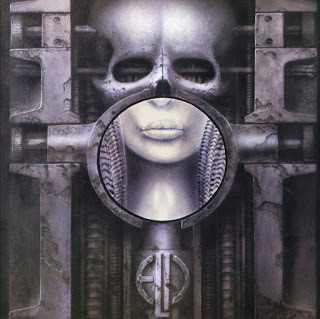 Brain Salad Surgery
(AM8)
Brain Salad Surgery
(AM8)
Artist: Emerson, Lake and Palmer
Producer: Greg Lake
Length: 45:04
Released: November 19, 1973
Tracks: 1) Jerusalem (2:44) 2) Toccata (7:20) 3) Still You Turn Me On (2:52); 4) Bennie the Bouncer (2:15) 5) Karn Evil 9, 1st Impression (8:39) 6) Karn Evil 9, 1st Impression, Part II (4:43) 7) Karn Evil 9, 2nd Impre4ssion (7:07); 8) Karn Evil 9, 3rd Impression (9:07)
Personnel: Keyboards (Hammond Organ C3, Steinway Piano, Moog Synthesizer IIIC, Mini Moog, Poly Moog, Moog Taurus) –Keith Emerson; Vocals, Bass, Acoustic, Electric and 12 String Guitars – Greg Lake; Drums, Percussion, Tympani, Tubular Bells – Carl Palmer
When Emerson, Lake & Palmer released their fourth studio album, Brain Salad Surgery, on November 19, 1973, the band's extravagantly audacious blend of outer-limits progressive rock, fantastical re-imaginings of classics and lush, pastoral pop balladry reached a creative and commercial peak. ELP's previous efforts accessed sizable but disparate audiences – art rockers flocked to Tarkus and Trilogy while curious classical adventure seekers embraced Pictures At An Exhibition – but with Brain Salad Surgery, the trio put the mainstream directly in their crosshairs without sacrificing their prodigious instrumental chops."We were still ascending when we made Brain Salad Surgery," Keith Emerson says. "We were enjoying a sensational amount of success, and I suppose we felt as if we could do anything – and we certainly tried. Musically, lyrically and visually, we really went for it."The album would be the inaugural release by the band's newly formed Manticore label and would differ from the extensively overdubbed Trilogy in that the group plotted out the music as a largely live creation. At the start of 1973, Emerson, Greg Lake and Carl Palmer purchased an abandoned cinema in Fulham, London, and converted it into a rehearsal and production facility, using an upstairs foyer to assemble and run through new compositions.“That was the general idea, to play the album live," Emerson recalls. "I pretty much had the whole concept in mind. We had taken a bit of a break to be with our families, so that gave me a fair enough time to put down enough hand-written ideas for the "Karn Evil 9." I then approached Greg and Carl with a sheaf of manuscript papers, and we set about rehearsing, going over the material and being sort of repetitive about it."

Once the epic "Karn Evil 9" was worked out – the 30-minute sci-fi tale of man vs machine would spill over from side one and encompass the whole of side two – ELP loosened up with the deliciously lighthearted honky-tonk saloon spoof "Benny The Bouncer." "We liked to get the serious stuff out of the way and then do something fun," Emerson says. "We had done "Are You Ready Eddy?" and "The Sheriff" before. It was always a nice little breather to soften the mood, both in the studio and on record."To complete the lyrics to both "Karn Evil 9" and "Benny The Bouncer," Lake recruited his old pal and former King Crimson bandmate Peter Sinfield. "Greg had always been a prolific songwriter and lyricist," Emerson notes, "but at this particular time he needed the influence of somebody he had confidence in. Pete brought a lot of fantastic ideas and lines to the songs."Recording took place between June and September of 1973 at London's Advision and Olympic Studios, with Lake, as he had done on the group's previous albums, serving as producer. "It was a pretty straightforward time in the studio," Emerson says, "even with some of the new pieces of equipment we were using, like the Moog Apollo. Because we were so rehearsed, there wasn't a lot of mucking about. We didn't have Pro Tools and all the things that exist now. If a person made a mistake, you didn't say, 'Oh, we'll fix that later.' We really had to get it right as we played together."Trilogy and Brain Salad Surgery stand up as two of the great albums in one of rock's most incredibly prolific years. Released simultaneously were Fragile and Close to the Edge, Ziggy Stardust and Aladdin Sane, Thick as a Brick, Genesis' Fox Trot and Selling England by the Pound, PFM's Per Un Amico, Three Friends and Octopus, Roxy Music, Seventh Sojourn, ELO II and On the Third Day, Can't Buy a Thrill, Obscured By Clouds, Machine Head, Neil Young's Harvest, Transformer...
Artist: Emerson, Lake and Palmer
Producer: Greg Lake
Length: 42:23
Released: July 6, 1972
Tracks: 1) The Endless Enigma I (6:41) 2) Fugue (1:56) 3) The Endless Enigma II (2:03); 4) From the Beginning (4:16) 5) The Sheriff (3:22) 6) Hoedown (3:47) 7) Trilogy (8:54); 8) Living Sin (3:13); 9) Abaddon's Bolero (8:08)
Personnel: Keyboards (Hammond Organ C3, Steinway Piano, Moog Synthesizer IIIC, Mini Moog) – Keith Emerson; Vocals, Bass – Greg Lake; Drums, Percussion – Carl Palmer
 Trilogy is the ELP studio album that exemplifies the myriad styles dabbled in during their peak creative phase (1970-1973), and thus a great starting point for any novice prog fan, or anyone for that matter. There's the symphonic suite ("Endless Enigma"), featuring a wonderful piano "Fugue" at its core), the catchy yet melancholy acoustic ballad from Lake (the FM hit "From The Beginning"), a Wild-West comedy number that echoes The Beatles' "Rocky Raccoon" ("The Sheriff"), the classical salvo ("Hoedown", one of the great classical covers in their repertoire and another FM staple), hard rock ("Living Sin"), and synth exploration ("Abaddon's Bolero"), which plays with the Bolero structure in 4/4 time, rather than the traditional march. This is top notch musicianship. Fans of the first two King Crimson albums lost something intrinsic when Lake jumped ship, but by Trilogy everyone knew it was the right move. The album harkens back to the first in that it's concise and balanced between light and heavy, with all three artists honing their skills to create prog music with purpose and direction (while never being pretentious). Pretention is the critical adjective of note for later ELP as the trio became, more and more, pompous rock Gods without a congregation, but not yet. Trilogy is the best-sounding album from ELP, the group's production work here as sharp as a knife edge.
Trilogy is the ELP studio album that exemplifies the myriad styles dabbled in during their peak creative phase (1970-1973), and thus a great starting point for any novice prog fan, or anyone for that matter. There's the symphonic suite ("Endless Enigma"), featuring a wonderful piano "Fugue" at its core), the catchy yet melancholy acoustic ballad from Lake (the FM hit "From The Beginning"), a Wild-West comedy number that echoes The Beatles' "Rocky Raccoon" ("The Sheriff"), the classical salvo ("Hoedown", one of the great classical covers in their repertoire and another FM staple), hard rock ("Living Sin"), and synth exploration ("Abaddon's Bolero"), which plays with the Bolero structure in 4/4 time, rather than the traditional march. This is top notch musicianship. Fans of the first two King Crimson albums lost something intrinsic when Lake jumped ship, but by Trilogy everyone knew it was the right move. The album harkens back to the first in that it's concise and balanced between light and heavy, with all three artists honing their skills to create prog music with purpose and direction (while never being pretentious). Pretention is the critical adjective of note for later ELP as the trio became, more and more, pompous rock Gods without a congregation, but not yet. Trilogy is the best-sounding album from ELP, the group's production work here as sharp as a knife edge.  Brain Salad Surgery
(AM8)
Brain Salad Surgery
(AM8)Artist: Emerson, Lake and Palmer
Producer: Greg Lake
Length: 45:04
Released: November 19, 1973
Tracks: 1) Jerusalem (2:44) 2) Toccata (7:20) 3) Still You Turn Me On (2:52); 4) Bennie the Bouncer (2:15) 5) Karn Evil 9, 1st Impression (8:39) 6) Karn Evil 9, 1st Impression, Part II (4:43) 7) Karn Evil 9, 2nd Impre4ssion (7:07); 8) Karn Evil 9, 3rd Impression (9:07)
Personnel: Keyboards (Hammond Organ C3, Steinway Piano, Moog Synthesizer IIIC, Mini Moog, Poly Moog, Moog Taurus) –Keith Emerson; Vocals, Bass, Acoustic, Electric and 12 String Guitars – Greg Lake; Drums, Percussion, Tympani, Tubular Bells – Carl Palmer
When Emerson, Lake & Palmer released their fourth studio album, Brain Salad Surgery, on November 19, 1973, the band's extravagantly audacious blend of outer-limits progressive rock, fantastical re-imaginings of classics and lush, pastoral pop balladry reached a creative and commercial peak. ELP's previous efforts accessed sizable but disparate audiences – art rockers flocked to Tarkus and Trilogy while curious classical adventure seekers embraced Pictures At An Exhibition – but with Brain Salad Surgery, the trio put the mainstream directly in their crosshairs without sacrificing their prodigious instrumental chops."We were still ascending when we made Brain Salad Surgery," Keith Emerson says. "We were enjoying a sensational amount of success, and I suppose we felt as if we could do anything – and we certainly tried. Musically, lyrically and visually, we really went for it."The album would be the inaugural release by the band's newly formed Manticore label and would differ from the extensively overdubbed Trilogy in that the group plotted out the music as a largely live creation. At the start of 1973, Emerson, Greg Lake and Carl Palmer purchased an abandoned cinema in Fulham, London, and converted it into a rehearsal and production facility, using an upstairs foyer to assemble and run through new compositions.“That was the general idea, to play the album live," Emerson recalls. "I pretty much had the whole concept in mind. We had taken a bit of a break to be with our families, so that gave me a fair enough time to put down enough hand-written ideas for the "Karn Evil 9." I then approached Greg and Carl with a sheaf of manuscript papers, and we set about rehearsing, going over the material and being sort of repetitive about it."

Once the epic "Karn Evil 9" was worked out – the 30-minute sci-fi tale of man vs machine would spill over from side one and encompass the whole of side two – ELP loosened up with the deliciously lighthearted honky-tonk saloon spoof "Benny The Bouncer." "We liked to get the serious stuff out of the way and then do something fun," Emerson says. "We had done "Are You Ready Eddy?" and "The Sheriff" before. It was always a nice little breather to soften the mood, both in the studio and on record."To complete the lyrics to both "Karn Evil 9" and "Benny The Bouncer," Lake recruited his old pal and former King Crimson bandmate Peter Sinfield. "Greg had always been a prolific songwriter and lyricist," Emerson notes, "but at this particular time he needed the influence of somebody he had confidence in. Pete brought a lot of fantastic ideas and lines to the songs."Recording took place between June and September of 1973 at London's Advision and Olympic Studios, with Lake, as he had done on the group's previous albums, serving as producer. "It was a pretty straightforward time in the studio," Emerson says, "even with some of the new pieces of equipment we were using, like the Moog Apollo. Because we were so rehearsed, there wasn't a lot of mucking about. We didn't have Pro Tools and all the things that exist now. If a person made a mistake, you didn't say, 'Oh, we'll fix that later.' We really had to get it right as we played together."Trilogy and Brain Salad Surgery stand up as two of the great albums in one of rock's most incredibly prolific years. Released simultaneously were Fragile and Close to the Edge, Ziggy Stardust and Aladdin Sane, Thick as a Brick, Genesis' Fox Trot and Selling England by the Pound, PFM's Per Un Amico, Three Friends and Octopus, Roxy Music, Seventh Sojourn, ELO II and On the Third Day, Can't Buy a Thrill, Obscured By Clouds, Machine Head, Neil Young's Harvest, Transformer...
Published on July 25, 2018 05:51
ELP - Trilogy - AM9.1
 Trilogy
(AM9.1)
Trilogy
(AM9.1)Artist: Emerson, Lake and Palmer
Producer: Greg Lake
Length: 42:23
Released: July 6, 1972
Tracks: 1) The Endless Enigma I (6:41) 2) Fugue (1:56) 3) The Endless Enigma II (2:03); 4) From the Beginning (4:16) 5) The Sheriff (3:22) 6) Hoedown (3:47) 7) Trilogy (8:54); 8) Living Sin (3:13); 9) Abaddon's Bolero (8:08)
Personnel: Keyboards (Hammond Organ C3, Steinway Piano, Moog Synthesizer IIIC, Mini Moog) – Keith Emerson; Vocals, Bass – Greg Lake; Drums, Percussion – Carl Palmer
Emerson, Lake and Palmer's fourth LP (third studio effort), Trilogy, opens with the sound of a heartbeat to frame the subject of the meaning of life, or life in a cultural construct. The eerie sounds Keith Emerson creates on the Moog, combined with sudden piano runs and fading bongos, establish a sense of mystery that quickly manifests itself into chaos, like the restlessness of a tortured soul. After the band slows the tempo to provide a proper introduction, the vocals begin, with Lake at his best. At first, we don't know to whom the narrator is speaking, until, late in the sequence he admits that the sins ascribed to others are his own, the personification of humanity looking at itself in the mirror. The instrumentation is phenomenal with synth, piano, even a zourka, Palmer's incessant drum fills and Lake's distinctive bass and clear tenor. The song is divided in half by "Fugue" a superb piano interlude with Lake's bass syncopated nicely in the background and Palmer's simple triangle adding a touch of counterpoint. The music changes mood and melody significantly through the pieces: some quiet, some heavy and full of passion. Emerson's synthesizer finally emulates bells and trumpets as Lake belts out the climax to the lengthy track. Lake's vocals are thrilling and hotly emotive, particularly in lines like "They make me sick and tired" and "Please, please, please open their eyes" against Emerson's intrusive Hammond. And then the compelling final verse:
Each part was played
Though the play was not shown
Everyone came
Though they all sat alone
The dawn opened the play
Breaking the day
Causing a silent hooray
The dawn will break another day
Now that it's done
I've begun to see the reason why I'm here.

"The Endless Enigma" is frankly fucking fabulous, one of the great works of progressive rock, followed by an FM standard, one of three by Lake in the canon, "From the Beginning." After the lyrical ballad concludes, Emerson's iconic synth solo ends the track. "The Sheriff" is a playful ditty and the chance for Emerson to show his prowess and diversity, as does "Hoedown," a send-off to Aaron Copland and finally "Abaddon's Bolero," with two tracks that precede the band's musical take on the Armageddon.
The lesser of those is "Living Sin," a heady, dark track, with Lake growling the lyrics in a theatrical seedy undertone: "If you never saw it coming, Hooked you up with Coca-Cola coming, Nice and slippery." While I enjoy the effort, particularly those lyrics, that Golem-esque voice is one of the reason's that Trilogy is only an AM9; while the track redeems itself in other ways.
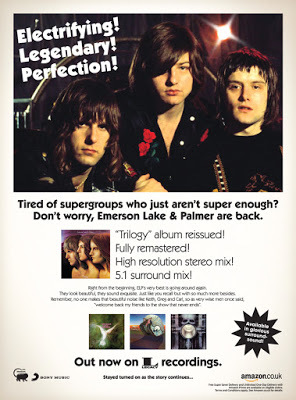 On "Trilogy," the LP's side two opus, Emerson's piano again sounds the business: crisp, clear Steinway, with the introductory section sounding like progressive Gershwin. Later Emerson brings in Hammond and synthesizers and really rocks it up during a long instrumental section. The track tells the story of a breakup and the profound emotional trauma it entails. The patter-like lyrics, though, are what bring the track to life.
On "Trilogy," the LP's side two opus, Emerson's piano again sounds the business: crisp, clear Steinway, with the introductory section sounding like progressive Gershwin. Later Emerson brings in Hammond and synthesizers and really rocks it up during a long instrumental section. The track tells the story of a breakup and the profound emotional trauma it entails. The patter-like lyrics, though, are what bring the track to life.I've tried to mend
The love that ended
Long ago although we still pretend
Our love is surely coming to an end Don't waste the time you've got to love again
We tried to lieBut you and IKnow better than to let each other lieThe thought of lying to you makes me cryCounting up the time that's passed us by
I've sent this letter hoping it will reach your handAnd if it does I hope that you will understand
That I must leave in a while
And though I smile You know the smile is only there to hideWhat I'm really feeling deep insideJust a face where I can hang my pride
Goodbye...Goodbye...
We'll talk of places that we wentAnd times that we have spentTogether penniless and free
You'll see the day another wayAnd wake up with the sunshinePourin’ right down where you lay
You'll love again, I don't know whenBut if you do I know thatyou'll be happy in the end
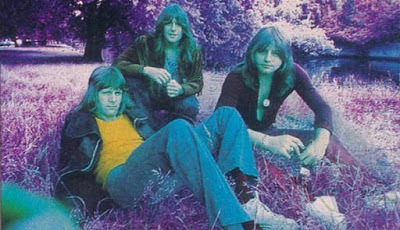 While the rhyme scheme is quite clever and pronounced, it's the content of the lyrics that capture the story's essence, particularly in the use of three separate tenses as the lyrics progress. The lyrics in the first verse are past-tense; reflective and looking back at what the relationship once was. The second verse is written in the present-tense describing the day when the "ex" no longer feels pain over the breakup. After the extended instrumental section, the third verse, in the future-tense, reassures her that they will find love and happiness once again, in time.
While the rhyme scheme is quite clever and pronounced, it's the content of the lyrics that capture the story's essence, particularly in the use of three separate tenses as the lyrics progress. The lyrics in the first verse are past-tense; reflective and looking back at what the relationship once was. The second verse is written in the present-tense describing the day when the "ex" no longer feels pain over the breakup. After the extended instrumental section, the third verse, in the future-tense, reassures her that they will find love and happiness once again, in time.Rather than being left with some kind of false Disney ending, the listener hopes instead that the breakup works out for the best. There isn't an overwhelming urge to hear the narrator and the ex getting back together. The listener, first hand, has also been exposed to the pain, the confusion, the anxiety, and the loneliness of the breakup, but then as well, the clarity, simplicity and optimism of what lies ahead. The ending is a rational reflection that doesn't call for back-pedaling to the way things were.
Two solid epics, two glorious instrumentals, a phenomenal love song, some kitchy western hoopededoo and a disposable, if acceptable three minute toss-out, make for a solid AM9, vying for one's attention as a 10.
Published on July 25, 2018 05:13
July 24, 2018
Emerson, Lake and Palmer - From the Beginning
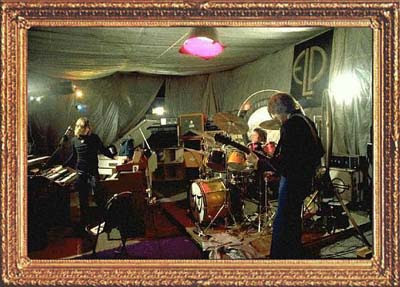 Keith Emerson began his formal music education at eight years old. Quickly tiring of "playing like Bach," Emerson discovered American free form jazz, particularly that of progressive organist Jack McDuff. After playing in several bands throughout college, where he purchased a Hammond L100 electric piano, Emerson heard that P.P. Arnold, a successful solo R&B singer was looking for a backup band. Emerson formed The Nice, with this intent, though six months later the band began performing on their own. During late 1967, the band opened for Pink Floyd and Jimi Hendrix, often at The Marquee Club, whose dossier included David Bowie and the Lower Third, The Yardbirds, Manfred Mann, The Move and The Small Faces. In January 1968, The Nice traveled to the U.S. returning to Britain just in time for the release of their debut, The Thoughts of Emerlist Davjack (a contraction of the band members' names). They later recorded "America," a work that combined Leonard Bernstein's famous piece from West Side Story, Dvorak's New World Symphony and protest lyrics, making for a complex political statement (as well as a controversial one since Bernstein didn't initially approve). During a King Crimson/Nice show in 1969, Emerson met Crimson's young bass player, Greg Lake, backstage, and after a brief chat, they tentatively decided to form a band.
Keith Emerson began his formal music education at eight years old. Quickly tiring of "playing like Bach," Emerson discovered American free form jazz, particularly that of progressive organist Jack McDuff. After playing in several bands throughout college, where he purchased a Hammond L100 electric piano, Emerson heard that P.P. Arnold, a successful solo R&B singer was looking for a backup band. Emerson formed The Nice, with this intent, though six months later the band began performing on their own. During late 1967, the band opened for Pink Floyd and Jimi Hendrix, often at The Marquee Club, whose dossier included David Bowie and the Lower Third, The Yardbirds, Manfred Mann, The Move and The Small Faces. In January 1968, The Nice traveled to the U.S. returning to Britain just in time for the release of their debut, The Thoughts of Emerlist Davjack (a contraction of the band members' names). They later recorded "America," a work that combined Leonard Bernstein's famous piece from West Side Story, Dvorak's New World Symphony and protest lyrics, making for a complex political statement (as well as a controversial one since Bernstein didn't initially approve). During a King Crimson/Nice show in 1969, Emerson met Crimson's young bass player, Greg Lake, backstage, and after a brief chat, they tentatively decided to form a band.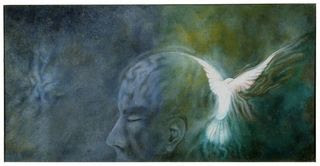 Greg Lake began his musical tenure when given a guitar by his mother. As a school boy he wrote the song that would later become one of ELP's greatest hits, "Lucky Man." During the late '60s, Lake played in several bands, and one of these, The Shy Limbs, nearly got him killed. The band slept in a van and ate when they could. Lake developed complications from pneumonia and nearly died before his mother intervened and checked him into the hospital.
Greg Lake began his musical tenure when given a guitar by his mother. As a school boy he wrote the song that would later become one of ELP's greatest hits, "Lucky Man." During the late '60s, Lake played in several bands, and one of these, The Shy Limbs, nearly got him killed. The band slept in a van and ate when they could. Lake developed complications from pneumonia and nearly died before his mother intervened and checked him into the hospital.While bassist for The Gods, Lake caught the attention of Robert Fripp, who was searching for a bassist for King Crimson. Lake sang and played bass on the band's first album, In The Court Of The Crimson King, but Fripp's "tyranny" alienated Lake, who remained with KC just long enough to record Crimson's 2nd album, In The Wake Of Poseidon (as lead singer but not as bassist).
While Emerson and Lake searched for a percussionist, they met Mitch Mitchell, Jimi Hendrix's drummer, who didn't wish to join but endeavored to get Hendrix into the new band. After inviting Carl Palmer, a young drummer from Atomic Rooster and The Crazy World of Arthur Brown, the British Press fantasized about a new band with two virtuosi like Hendrix and Emerson, and speculated the band would be called Hendrix, Emerson, Lake and Palmer or HELP, but Hendrix died in September 1970 before the idea came to fruition.
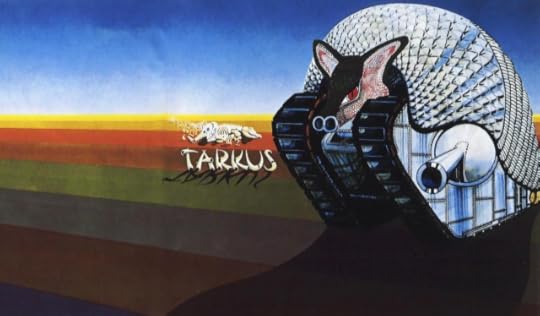 By October, Emerson, Lake and Palmer released their eponymous debut LP. The newly formed band sounded like a veteran supergroup. Emerson, Lake and Palmer (AM7) represents what happens when the right musicians find each other at the right time. All three fresh from other notable bands, it was a meeting of the gods. The fact that albums like this are given short shrift by rock critics says far more about the dark state of rock criticism than it does about the quality of the music therein. Every second on Emerson, Lake And Palmer's debut LP (with the exception of Palmer's accomplished but somewhat needless drum solo on "Tank") is a triumph, as the group moves effortlessly between the multiverse of rock, jazz and classical before heading into the newly-charted realms of electronica with the Moog. Their sense of ensemble on tracks like "The Barbarian" and "Take A Pebble" is breathtaking. Hearing "Knife Edge" for the first time on KMET in 1974, over a crackly FM transmitter, sent a chill down my spine that has never quite gone away.
By October, Emerson, Lake and Palmer released their eponymous debut LP. The newly formed band sounded like a veteran supergroup. Emerson, Lake and Palmer (AM7) represents what happens when the right musicians find each other at the right time. All three fresh from other notable bands, it was a meeting of the gods. The fact that albums like this are given short shrift by rock critics says far more about the dark state of rock criticism than it does about the quality of the music therein. Every second on Emerson, Lake And Palmer's debut LP (with the exception of Palmer's accomplished but somewhat needless drum solo on "Tank") is a triumph, as the group moves effortlessly between the multiverse of rock, jazz and classical before heading into the newly-charted realms of electronica with the Moog. Their sense of ensemble on tracks like "The Barbarian" and "Take A Pebble" is breathtaking. Hearing "Knife Edge" for the first time on KMET in 1974, over a crackly FM transmitter, sent a chill down my spine that has never quite gone away. 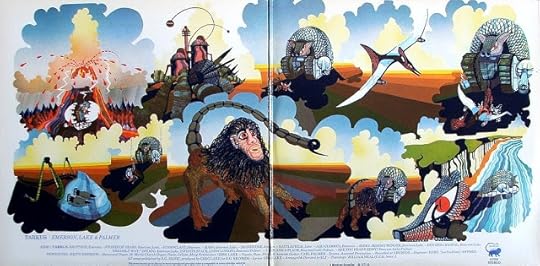 Tarkus (AM7) saw Emerson, Lake And Palmer trying their darnedest to outplay their contemporaries - a goal which they succeed effortlessly in achieving - although as a result the album lacks a sense of restraint. Its centerpiece is the title suite that took up all of side one, an intense, varied 20-minute prog epic that hits the listener like a ton of bricks; its first impression will either leave one fascinated by its originality and virtuosity, or running from the room screaming overkill. Were Tarkus written by a contemporary western avant-garde composer (think John Cale or today, Nico Muhly), it would have been recognized as the complex atonal a-rhythmic masterpiece that it is. For most rock listeners, however, the album simply asks too much. It is a complex work full of invention and shifting horizons, far more complex and coherent than even the most celebrated rock albums previously called "complex." A schizophrenic hootenanny, "Tarkus," the LP's shining focus, is indeed a glorious slab of prime prog. Emerson's Hammond B3 and Moog are out of this world, Lake's vocals and under-rated bass work are exceptional and Palmer provides what is the strongest long-form track of his career.
Tarkus (AM7) saw Emerson, Lake And Palmer trying their darnedest to outplay their contemporaries - a goal which they succeed effortlessly in achieving - although as a result the album lacks a sense of restraint. Its centerpiece is the title suite that took up all of side one, an intense, varied 20-minute prog epic that hits the listener like a ton of bricks; its first impression will either leave one fascinated by its originality and virtuosity, or running from the room screaming overkill. Were Tarkus written by a contemporary western avant-garde composer (think John Cale or today, Nico Muhly), it would have been recognized as the complex atonal a-rhythmic masterpiece that it is. For most rock listeners, however, the album simply asks too much. It is a complex work full of invention and shifting horizons, far more complex and coherent than even the most celebrated rock albums previously called "complex." A schizophrenic hootenanny, "Tarkus," the LP's shining focus, is indeed a glorious slab of prime prog. Emerson's Hammond B3 and Moog are out of this world, Lake's vocals and under-rated bass work are exceptional and Palmer provides what is the strongest long-form track of his career. 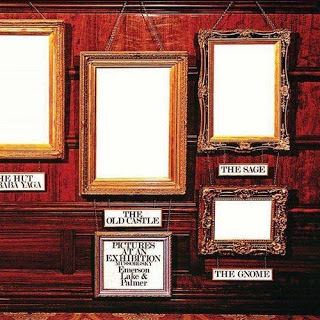 As for the concept, well, there's this armadillo-tank thing and it kills a bunch of creature things until one of them kills it, so, like a lot of fantasy prog, Tarkus is essentially a mess of pretentious hoo-hah over nothing. And I for one happen to love it.
As for the concept, well, there's this armadillo-tank thing and it kills a bunch of creature things until one of them kills it, so, like a lot of fantasy prog, Tarkus is essentially a mess of pretentious hoo-hah over nothing. And I for one happen to love it.My first experience with classical music was through Looney Tunes, most specifically Elmer Fudd's "Barber of Seville" or the "Kill da wabbit" scene in "What's Opera Doc?" In lieu of that, maybe it was the odd take on classical that was Ray Conniff's Concert in Rhythm on which my mother sang back up vocals. While this kind of exposure seems trivial, it helped to create a life long quest for more music. Naturally as a young teen the Peter and the Wolf sensibility of progressive rock made an impression, as did rock music in general as it often borrowed from the classical canon. I remember seeing Bowie at the Santa Monica Civic in 1972 with my older brother. Before Bowie hit the stage, the decibels were cranked on towers of amps playing Beethoven's 9th. And in 1968, I was struck by Blood, Sweat and Tears take on Satie's Trois Gymnopedies, still one of my favorite classical arrangements.
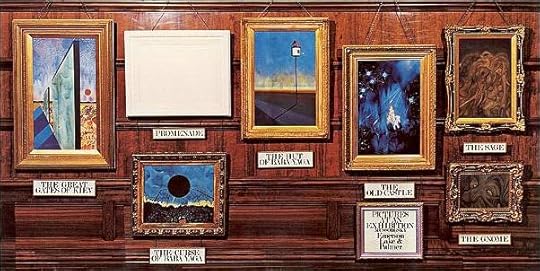
My further immersion into classical music would have me bring home ELP's Pictures at an Exhibition. I'd heard ELP prior to this, but this, to my novice ears, was the real deal.Greg Lake adds some light philosophical/trippy-dippy lyrics to the Modest Mussourgsky masterpiece, and like every piece of excess ELP did early in their career, it works. Keith Emerson traipses through most every tone he can get from his early synth arsenal (jarring or otherwise) , giving him the U.K. moniker "the Hendrix of Keyboards" (oh brother, but you get the point). Rumor has it Jimi actually wanted to join the band after hearing this album. Just think! Hendrix, Emerson, Lake, and Palmer (or HELP, for short). Pictures has more raw urgency than anything in their catalog, and while Jimi may have had an ear for its brilliance, most of us, myself included, find this the least accessible ELP LP.
Published on July 24, 2018 04:23
July 23, 2018
In a Glass House - Gentle Giant
Gentle Giant's fifth album, 1973's In A Glass House, had a bit of difficulty upon it's original release. CBS Records, who released GG's previous two albums in the States, apparently didn't care for the band's latest offering, and they passed on it. For the longest time, American fans of Gentle Giant could only get the LP as an import. The incredible packaging, though, made the extra expense worthwhile.
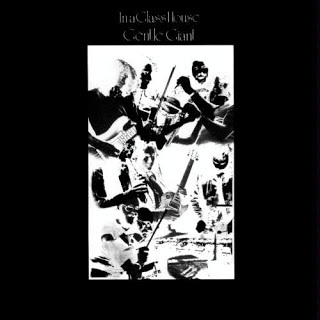 The album's bookend tracks, "The Runaway" (kicking off with the sound of breaking glass) and the title track (which concludes with the same sound of breaking glass) are two of the band's best pieces - great, quirky, uncompromising prog rock. "An Inmate's Lullaby" and "A Reunion" are both haunting and beautiful, and "Way Of Life" and "Experience" are solid Gentle Giant rockers. The band's precision and performances are amazing, the vocals are oddly mellifluous, and the album's production is top-notch.
The album's bookend tracks, "The Runaway" (kicking off with the sound of breaking glass) and the title track (which concludes with the same sound of breaking glass) are two of the band's best pieces - great, quirky, uncompromising prog rock. "An Inmate's Lullaby" and "A Reunion" are both haunting and beautiful, and "Way Of Life" and "Experience" are solid Gentle Giant rockers. The band's precision and performances are amazing, the vocals are oddly mellifluous, and the album's production is top-notch.
With a far gruffer production, this record departs from the medieval folk and jazzy touches that tend to define Giant's work, and goes much further in the vein of traditional Prog Rock, with a stronger, heavier, bluesy edge, Gary Green taking center-stage in guitar-driven tracks like "Experience." The predilection towards rock means there isn't the same bizarre variety in style and sound that made Octopus and Acquiring the Taste such delights. The longer track lengths also mean there is a tendency to ramble, something which until now had never effected Giant as it had their Prog contemporaries. Nonetheless, Kerry Minnear's partnership with the remaining Shulman brothers continued to produce bizarre and fetching compositions which grab one's ears with twists and turns tied together in a trademarked melodic creativity. The band was, by and large, vice-tight, with their classical elements (Minnear/Shulman/Shulman) providing fascinating interplay with its rockier edges (Green/Weathers). That interplay gave the band's bizarre output the driving edge it needed to appeal to the mainstream. In A Glass House is a definitive, if overlooked, Gentle Giant gem.
 The album's bookend tracks, "The Runaway" (kicking off with the sound of breaking glass) and the title track (which concludes with the same sound of breaking glass) are two of the band's best pieces - great, quirky, uncompromising prog rock. "An Inmate's Lullaby" and "A Reunion" are both haunting and beautiful, and "Way Of Life" and "Experience" are solid Gentle Giant rockers. The band's precision and performances are amazing, the vocals are oddly mellifluous, and the album's production is top-notch.
The album's bookend tracks, "The Runaway" (kicking off with the sound of breaking glass) and the title track (which concludes with the same sound of breaking glass) are two of the band's best pieces - great, quirky, uncompromising prog rock. "An Inmate's Lullaby" and "A Reunion" are both haunting and beautiful, and "Way Of Life" and "Experience" are solid Gentle Giant rockers. The band's precision and performances are amazing, the vocals are oddly mellifluous, and the album's production is top-notch. With a far gruffer production, this record departs from the medieval folk and jazzy touches that tend to define Giant's work, and goes much further in the vein of traditional Prog Rock, with a stronger, heavier, bluesy edge, Gary Green taking center-stage in guitar-driven tracks like "Experience." The predilection towards rock means there isn't the same bizarre variety in style and sound that made Octopus and Acquiring the Taste such delights. The longer track lengths also mean there is a tendency to ramble, something which until now had never effected Giant as it had their Prog contemporaries. Nonetheless, Kerry Minnear's partnership with the remaining Shulman brothers continued to produce bizarre and fetching compositions which grab one's ears with twists and turns tied together in a trademarked melodic creativity. The band was, by and large, vice-tight, with their classical elements (Minnear/Shulman/Shulman) providing fascinating interplay with its rockier edges (Green/Weathers). That interplay gave the band's bizarre output the driving edge it needed to appeal to the mainstream. In A Glass House is a definitive, if overlooked, Gentle Giant gem.
Published on July 23, 2018 04:50
Gentle Giant - Octopus - AM9
 When my eldest daughter was five, she came home from the book fair with a picture book called Gentle Giant Octopus and laid it on the kitchen table. Its square shape made it look like an EP and based on the title, I was more than a little taken aback. Of course, I quickly realized that it had nothing at all to do with one of my go-to LPs of the prog era, but I scrambled through what was left of my then dwindling record collection; and indeed, based on the unique American cut out cover of a jar containing an octopus, I had kept it. I hadn't heard it in years but still found it sublime and exciting.
When my eldest daughter was five, she came home from the book fair with a picture book called Gentle Giant Octopus and laid it on the kitchen table. Its square shape made it look like an EP and based on the title, I was more than a little taken aback. Of course, I quickly realized that it had nothing at all to do with one of my go-to LPs of the prog era, but I scrambled through what was left of my then dwindling record collection; and indeed, based on the unique American cut out cover of a jar containing an octopus, I had kept it. I hadn't heard it in years but still found it sublime and exciting. Released in 1972, Gentle Giant's fourth album had a harder, more rocking edge, making a striking contrast with their more symphonic third album. The album still contains a diverse variety of sounds and textures, from the rocking madrigal power of "The Advent Of Panurge" to the vocal intricacies of "Knots," an interesting take on the R.D. Laing text, to the beauty of "Think Of Me With Kindness." The title was gleaned from Phil Shulman's wife, Roberta, and shorthand for "Octo Opus," or eight musical works. The album was released with a Roger Dean cover in the UK and the "octopus in a jar" cover in the USA by Charles White. Octopus is an overwhelming cascade of perfectly constructed multiple vocal harmonies, a paragon of instrumental virtuosity, with an assemblage of almost magical precision of the very varied and diverse instruments that the band plays; and even then its sound is clean, intelligible, clear, luminous. You know, kinda perfect, an "octo opus" of just over 30 minutes that leaves the listener breathless.
Released in 1972, Gentle Giant's fourth album had a harder, more rocking edge, making a striking contrast with their more symphonic third album. The album still contains a diverse variety of sounds and textures, from the rocking madrigal power of "The Advent Of Panurge" to the vocal intricacies of "Knots," an interesting take on the R.D. Laing text, to the beauty of "Think Of Me With Kindness." The title was gleaned from Phil Shulman's wife, Roberta, and shorthand for "Octo Opus," or eight musical works. The album was released with a Roger Dean cover in the UK and the "octopus in a jar" cover in the USA by Charles White. Octopus is an overwhelming cascade of perfectly constructed multiple vocal harmonies, a paragon of instrumental virtuosity, with an assemblage of almost magical precision of the very varied and diverse instruments that the band plays; and even then its sound is clean, intelligible, clear, luminous. You know, kinda perfect, an "octo opus" of just over 30 minutes that leaves the listener breathless. 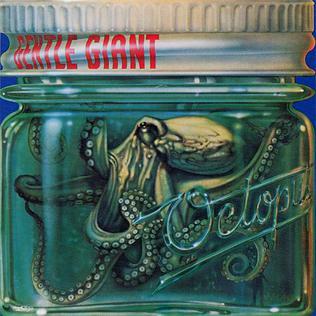 Track by track:
Track by track:The Advent of Panurge
The first theme begins with a velvety simplicity and softness. The voices of the Shulmans are characteristically giant-like. Almost a cappella, only accompanied by isolated notes of guitar, bass or keyboards, the opening lines were the first Gentle Giant music that I ever heard (I was 12). Hell of an intro. Then the rest of the band enters the mythical scene and the theme coils into an impressive combination of instruments and choirs, jazz passages and typically Giant sound structures. It is the incredible story of Panurge and Pantagruel from Rabelais.
Raconteur, Troubadour
Keeping with the medieval theme, the Giants give us a walk through the Middle Ages. In this theme they develop rhythms and musical cadences that capture the troubadour spirit of medieval. The band's musical prowess shines here.
A Cry for Everyone
Here, the lyrics are inspired by Albert Camus's literary and philosophical views. A typical Progressive Rocker with a powerful instrumentation and some delicious sound passages in which the keyboards and the guitar alternately take center stage, always supported by an impeccable and strong rhythmic base with a fibrous and resounding bass based on Ray Shulman's odd tuning.
Knots
This theme is a beautiful madrigal inspired by the poetic riddles of the eminent psychologist RD Laing. Gentle Giant create a musical game in which vocal diversities take center stage while a xylophone punctures notes here and there in counterpoint. At times it also has its Jazz touch, but what really stands out in this theme are the voices, perfectly articulated and modulated.
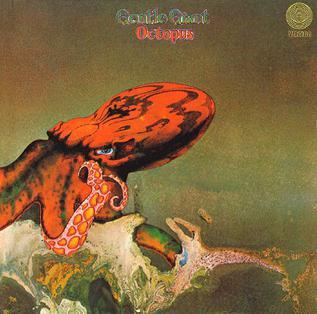 The Boys in the Band
The Boys in the BandA laugh and the sound of a coin spinning on itself over what looks like a wooden surface (both the work of engineer Martin Rushant) give way to a tremendous instrumental in which the rock power of the Giant emerges again. A bit of a disposable track, but proficient nonetheless.
Dog's Life
Love this track. Again the musical theme is medieval, and I say musical because the letrística is dedicated to the "life of dogs" of the roadies of the band, in a comedy tone of course. The melody is wonderful, wrapped up by some string arrangements and a spectacular medieval pump organ called at regal and played whimiscally by Kerry Minnear.
Think of Me with Kindness
Along with Aspirations, the most beautiful of Gentle Giant's tracks. The first piano notes sound and I get goose bumps. Intimate, moving and, at the same time, powerful,
Minnear's vocal is sublime. The delicate and perfect instrumentalization. The magnificent wind section. Ahhh, a love story.
River
Perhaps the most authentically progressive theme of the album, Gentle Giant tried to "create different atmospheres using the different electronic devices at our disposal in the recording studio." "River" has a rocky theme, with an outstanding guitar and, as I said at the beginning, a clear rock-progressive orientation in the sense of experimentation, advancement and creativity.
The musicians are far from household names (if I say Howe or Wetton, folks know who I'm talking about, but Shulman?):
Gary Green - Guitars, percussion
Kerry Minnear - Hammond organ, clavinet, vibraphone, percussion, cello, Moog, regal, lead and backing vocals
Derek Shulman - Lead vocals, alto saxophone
Philip Shulman - Saxophones, trumpet, mellophone, lead and backing vocals
Raymond Shulman - Bass, violin, guitar, percussion, vocals (the liner notes originally said "Bass Violin.")
John Weathers - Drums, percussion, xylophone.

Published on July 23, 2018 04:49
July 22, 2018
The Power and the Glory - Gentle Giant and Steven Wilson
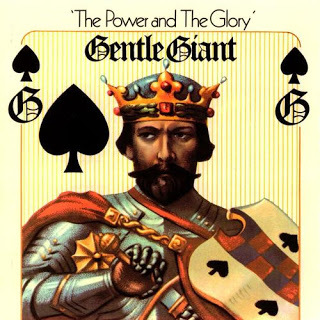
When asked about the Steven Wilson's involvement in the remix of The Power and the Glory, Gentle Giant frontman, Derek Shulman, had this to say: "Well, he got himself involved with us actually, because he is obviously a fan, or had been a fan of the group since he started his own band, Porcupine Tree. In fact my brother Ray had worked with him on various projects outside of Porcupine Tree, on remixes. And he had been asking my brother, who lives in London by the way, 'Please let me have a shot at least something that you've done.' And we said, 'Okay, we've got The Power and the Glory. You want a shot?' And he said, 'Absolutely. I’d love to do this.' So he volunteered to basically remix the whole record of his own volition. And not really make it different, but add his touches that we probably missed when we first mixed the record and put it together. So it was pretty true to what was originally recorded and mixed. He put some low end and mid ranged equalization in his mixing for the kick drum and bass guitar, et cetera, et cetera. It was him wanting to work with us and the music we had. And thankfully we still had the 24 tracks and let him loose."
 On the new mix: "Actually I quite like the original. The fact that someone wants to touch something that’s this old, I feel is quite ego stroking for us in that respect. But the original way it was done was one of the easiest albums we did. And I think he just embellished the sound. For my ears and I think the group’s ears it was certainly a record which sounded fairly decent, even for back in the day. Obviously there were no electronics. It was all played by ourselves and no time signatures, or machines playing the instruments. This was us. So it didn't differ. His remix of all the tracks didn’t differ that much from, as I said, the original version. But what he did was embellish the equalization. There's some parts which we probably missed, because we wanted to get it out and go tour. So it was pretty true to what the original version was."
On the new mix: "Actually I quite like the original. The fact that someone wants to touch something that’s this old, I feel is quite ego stroking for us in that respect. But the original way it was done was one of the easiest albums we did. And I think he just embellished the sound. For my ears and I think the group’s ears it was certainly a record which sounded fairly decent, even for back in the day. Obviously there were no electronics. It was all played by ourselves and no time signatures, or machines playing the instruments. This was us. So it didn't differ. His remix of all the tracks didn’t differ that much from, as I said, the original version. But what he did was embellish the equalization. There's some parts which we probably missed, because we wanted to get it out and go tour. So it was pretty true to what the original version was."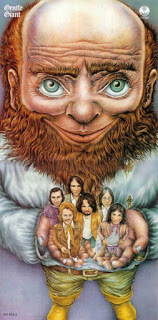 Ray Shulman: "Over the last few years we’d been asked by a number of people whether they could mix our albums in surround. We were always reluctant until Steven approached us. Having authored some of his other Blu-rays and DVDs I was very familiar with his work. What's great is that he pays a lot of respect to the original mix in terms of balance and tone but by spreading it around the available sound field, in such a creative way, it gives it a new life and I would think even listeners already familiar with the album would get a new perspective on the arrangements. Hopefully you can tell I’m pleased."
Ray Shulman: "Over the last few years we’d been asked by a number of people whether they could mix our albums in surround. We were always reluctant until Steven approached us. Having authored some of his other Blu-rays and DVDs I was very familiar with his work. What's great is that he pays a lot of respect to the original mix in terms of balance and tone but by spreading it around the available sound field, in such a creative way, it gives it a new life and I would think even listeners already familiar with the album would get a new perspective on the arrangements. Hopefully you can tell I’m pleased."Kerry Minnear: :"I enjoyed Steve's stereo mix of The Power and The Glory very much finding him to be able to 'beef things up' but keeping the original instrumental sounds clear and vibrant. I don't have a 5.1 system but I imagine that in that medium the counterpoint and part sharing in the music will be great to experience. I'm saving up for a new system just so I can hear it!"
Derek Shulman: "I was happy that Steven respected the sonic quality of original mixes. He 'tweaked' parts of the low end of the drums and bass and made slight adjustments to levels of the bass and kick drum. Overall I was very happy with Steven’s work on the album."
 For this writer, Gentle Giant's modesty and indeed their pride of self minimalizes the transformation from genre defining to genre defining and technically masterful. Often what keeps an LP from attaining top AM status is the quality of sound reproduction. Wilson's mix indeed transforms The Power and the Glory into one of the premiere LPs of the 70s prog era.
For this writer, Gentle Giant's modesty and indeed their pride of self minimalizes the transformation from genre defining to genre defining and technically masterful. Often what keeps an LP from attaining top AM status is the quality of sound reproduction. Wilson's mix indeed transforms The Power and the Glory into one of the premiere LPs of the 70s prog era.RE: the music itself, the first track, "Proclamation", is a chilling piece about the rise of a "benevolent" dictator to power, promising to solve the country's problems. The piano line and the sound effects (of a large crowd shouting "hail!") as well as the lyrics, evoke images of a Hitler or a Mussolini masterfully manipulating a crowd with pageantry and rousing speeches. The second track, "So Sincere," is a complex masterpiece of minimalism. It suggests the work of some modern classical composers - arrhythmical, non-melodic, and challenging (Nico Muhly comes to mind). The third track, "Aspirations", shifts gears into a mellow, keyboard-based ballad that is nonetheless emotionally powerful to listen to. "Playing the Game" is a rocker that incorporates Oriental musical influences as well. The mix works wonderfully; this may be the best track on the entire album (though I'm a sucker for "Aspirations" and Kerry Minnear in general). "Cogs in Cogs" is another rocker, successfully using rock instruments to evoke images of machinery as a metaphor for a totalitarian society. While not as obvious as today's industrial music based on totalitarian conceptual themes (e.g. Laibach), in the context of the 70s this song works as intended. The next two tracks, "No Gods a Man" and "The Face", depict cracks beginning to appear in the totalitarian regime, while the final track, "Valedictory", is musically a repeat of the opening track but with the lyrics about the dictator trying desperately to hold onto power even as it crumbles around him. Even Gentle Giant outdid themselves here. The Wilson mix elevates the LP from an AM7 to an AM8.
Published on July 22, 2018 06:55



